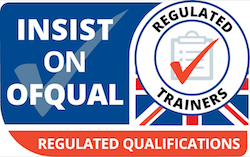1 – Choose an AED that’s easy to use
The AED you select should be so simple and easy to use so that anyone can deploy it without training and hesitation. Responders must be confident that they can use the device safely and quickly. The AED should require no more than two simple steps: turning the device on and applying the electrode pads. Fully automatic AEDs have this two-step process and make it easy for the responder by automatically delivering a shock without having to push a button.
2 – Consider the total cost of ownership
When assessing the cost of an AED program, take into account not only the up-front cost of the devices, but also the ongoing costs associated with maintaining them over time. To keep the total cost of ownership low and reduce maintenance hassles, choose a device with a synchronised replacement cycle for pads and batteries. Also, you may be able to increase your buying power by implementing your AED program across multiple sites. This could include other floors of your building, other sites within your own company or other companies in your business park.
3 – Implement an ongoing maintenance routine
Our AED devices require little maintenance. However, it is important to do a routine weekly or monthly visual inspection of the units to ensure they are in working order. Take the unit out, turn it on, check the battery light and ensure the pads are present and not passed their use by date.
4 – How to store and display your AED
Like a fire extinguisher, your AED devices must be placed in visible, accessible locations so one can be reached quickly in an emergency. In developing your plan, review the floorplan of your facility and identify locations where people are most likely to be during the day or during each shift. For instance, if the business office is locked after 5:00 p.m but a store or yard is open throughout the night., don’t place an AED inside. Also consider the correct type of storage cabinet to suit the environment the AED will be stored in.
5 – Developing a training plan
While automatic AEDs are designed for use by anyone, training in the use of an AED can help raise the awareness, comfort and the confidence level of potential responders in your organisation. The use of basic life saving skills in a cardiac arrest situation has been proven to dramatically improve the casualties chance of survival.
To discuss the AED requirements of your organisation, please contact one of our AED specialists to find out how we can help to assist you with your investment in defibrillators.









